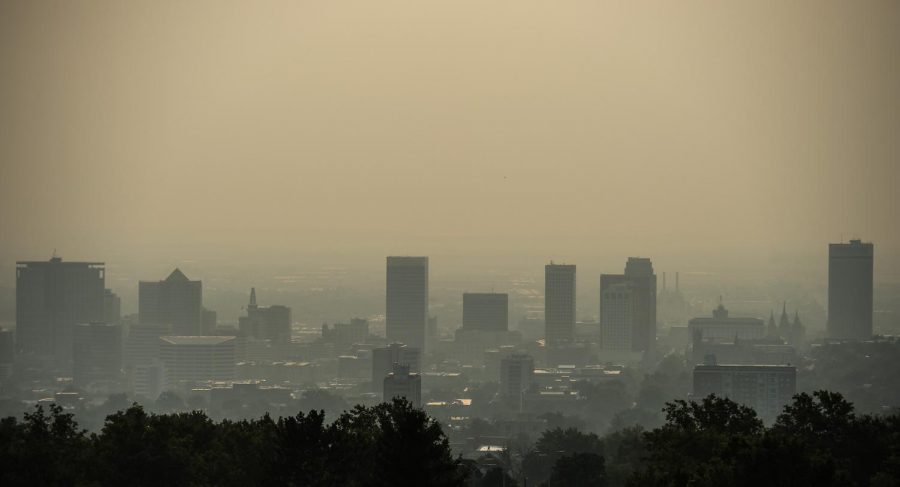Air Quality and Mental Health
Each winter, a thick haze rolls across the Salt Lake Valley, blocking the sky from view, and trapping the city for months. This haze is inversion, a phenomenon that occurs when the ground cools off overnight and a high-pressure storm system covers the area, keeping the cold air, and pollution, underneath. Many compare this to a lid over a bowl, as the valley is entrapped by the Wasatch, Oquirrh, and Traverse Mountain ranges, forming a basin that is impenetrable by winds.
When this happens, it causes the pollution that would normally dissipate, to remain near the ground. This increases the levels of fine particulate matter, often referred to as PM2.5. This sooty matter is a health concern to all citizens, but even more so to children and adolescents. These particles pollute the air we breathe, and in turn, will pollute our lungs.
Short term, this can cause coughing, but in the long run, it may lead to loss of lung capacity and asthma. But these are not the only concerns related to the inversion. In an article by the International Journal of Environmental Research and Public Health, published by MDPI, they have found, through post-mortem human studies, that this particulate matter is capable of reaching the brain. This may be connected to the amount of people with mental health issues in polluted cities.
As included in this article by MDPI, an estimated 10-20% of young people are affected by a mental health condition. These levels rise in cities with high pollution. Children and youth are the most susceptible to physical concerns from air pollution. This also makes them the most vulnerable to the neurological impacts that this may take on their brains, especially while they are still developing. Long term exposure to the particles in Utah air, mainly PM2.5 and nitrogen dioxide, have been linked to decreases of cognitive functions and neurobehavioral functions, as well as depression and anxiety.
Although this is not a definitive cause of mental health decline in youth, the connection to the high numbers in Utah are concerning. In a 2019 study, youth aged 6-17 in the state of Utah were found to have some of the highest accounts of mental health conditions. Utah’s levels of child mental health disorders exceed 20%, ranking it in the nation’s bottom twelve states.
With suicide being the leading cause of death in children aged 10-17 in Utah, this is a tremendous concern which is often overlooked. Lower levels of oxygen in the air due to pollution, and the high altitude of the state, interferes with the body’s levels of serotonin, says University of Utah researchers. When serotonin levels are low, it makes overcoming negative emotions more difficult. This can cause lasting impacts, such as worsening mental health and thoughts of suicide.
As this winter approaches, take the time to find some fresh air. The many canyons surrounding the city offer not only beautiful scenery and activities but can be an escape from the smog. Visiting most of them are free, and many local foundations offer activities for education and recreation.
For confidential information on mental health resources, text HOME to 741741 or call (800) 273-8355, or visit these additional resources. Available 24/7, they are here to help, even for the little things.
Amy Skeen is a senior at East High School and has been attending since she was a freshman. She has lived in Utah her entire life, born on January 8th,...










